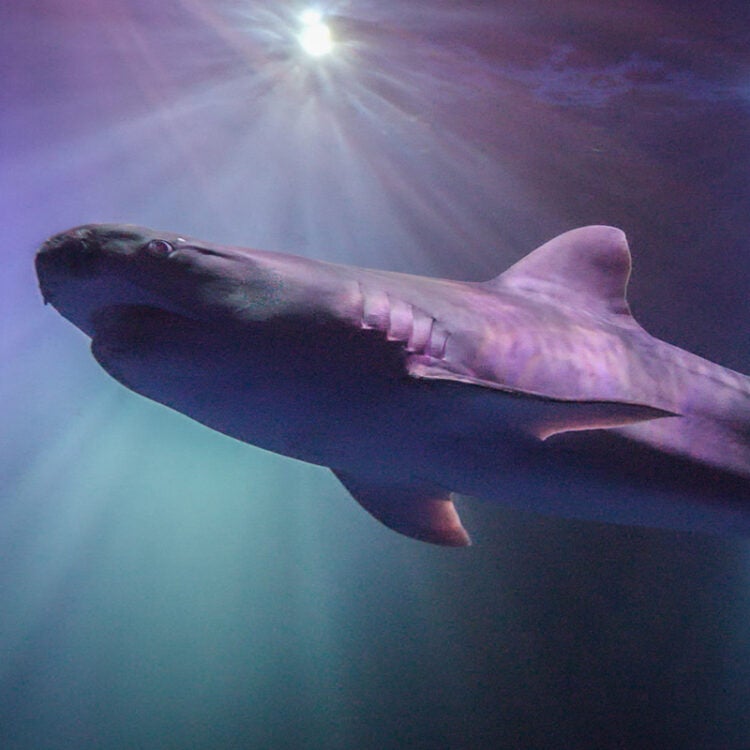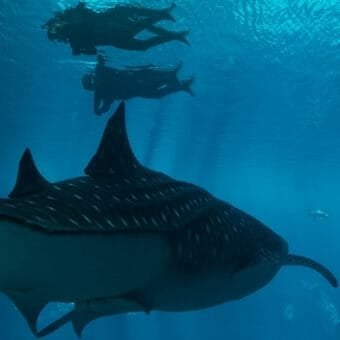-
Size
16 feet (4.9 m) and more than 1,400 pounds (635 kg) -
Diet
Bony fishes, sharks, rays, marine mammals and reptiles, invertebrates and sea birds -
Range
Tropical and temperature ocean environments worldwide -
Habitat
Continental shelves or islands and coral reefs
Physical Characteristics
- Juveniles have tiger-like stripes, which give this species its name. Stripes fade as sharks grow into adulthood but are still visible.
- Unlike many shark species, the male tiger shark is larger than the female.
- May grow longer than 16 feet (4.9 m) and weigh more than 1,400 pounds (635 kg).
- One of the largest carnivores in the ocean.
- Broad, wedge-shaped head with blunt snout.
- Coloration is dark gray to bluish or greenish-grey on the dorsal surface. The underside is stark white.
Animal Fact
The tiger shark is one of the largest carnivores in the ocean.
Diet / Feeding
- The diet of the tiger shark is one of the most diverse of any shark.
- Diet consists of many species of bony fish, sharks, rays, marine mammals (such as seals and dolphins), marine reptiles (such as turtles and sea snakes), invertebrates (such as crustaceans, cephalopods and jellies) and sea birds.
- Known to consume almost any type of marine debris that ends up in the ocean.
Range / Habitat
- Occurs in tropical and temperature ocean environments worldwide.
- Found on or near continental shelves or islands and coral reefs. Occasionally found in river estuaries and harbors.
Reproduction & Growth
- Both males and females will have multiple mates and will not form pair bonds.
- Only species of the family Carcharhinidae (requiem sharks) that does not use a placenta to nourish developing embryos.
- Gestation usually takes 13-16 months.
- Litter size of 10-82 pups.
- Females may mate again even before giving birth to the current litter.
Conservation Status
- Listed as “Near Threatened’ on The IUCN Red List.
Sources
www.fishbase.org
www.iucnredlist.org
www.flmnh.ufl.edu/fish
www.arkive.org
www.animaldiversity.org





